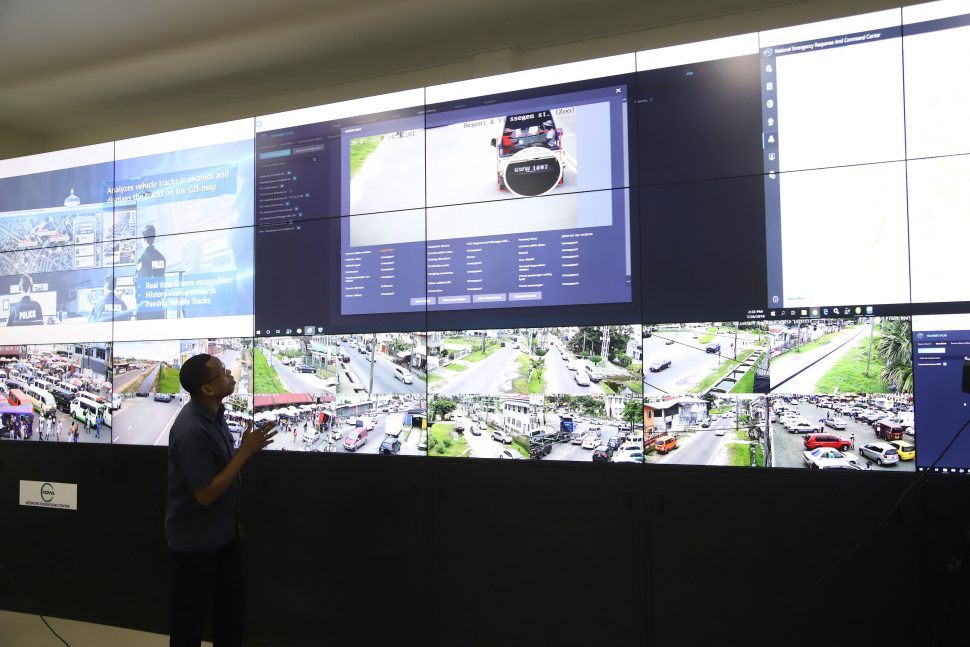The movements of citizens in and around the city can now be monitored following the activation of a Huawei-built Safe City Command Centre for the CCTV Surveillance system, a component of the US$36 million National Broadband Expansion Project (NBEP).
Deputy Head of the National Data Management Authority (NDMA) Francis Simmons yesterday conducted a demonstration of how the system works during a media tour of the facility, which is situated aback of the Arthur Chung Conference Centre, at Liliendaal.
Among those present were Minister of Public Security Khemraj Ramjattan, Minister of Public Telecommunications Cathy Hughes and various law enforcement officials, including Commissioner of Police Leslie James and Guyana Defence Force Chief of Staff Brigadier Patrick West.

The NBEP, funded by the China Exim Bank, is being executed by controversial Chinese multinational technology company Huawei Technologies Co Ltd.
The aim of the NBEP is to address gaps within the e-government network by improving the services to citizens in the areas of health, education, security, business and government administration.
The Safe City system is made up of a video wall, 102 Intelligent Video Surveillance sites, each consisting of three to four cameras, the command centre, which will have the capacity for about 25 agents, two systems that can be mounted on vehicles, as well as three different types of radios and body cameras.
The cameras are equipped with several features, such as video monitoring systems that aid in the deployment and tracking of law enforcement officers, remote tracking, a facial tracking system, a real time facial recognition and a licence plate location history search system.
The system is operational 24-hours per day and monitors sections of Georgetown and the East Bank of Demerara. Among some of the areas are Avenue of the Republic, Water Street, Lombard Street, Brickdam, Lime Street and Croal Street.
It is expected to be expanded across the country.
Hughes, during her brief remarks yesterday, said that the aim of the Safe City initiative is to ensure that citizens are provided with “prompt public security services.”
“Today, what we are really showing you is how through technology we are able to guarantee a higher level of service to citizens in Guyana,” she said. “I think this takes us up a notch. I hope you are all encouraged that we are moving up in this area,” she added.
Meanwhile, Ramjattan described the initiative as one of the best developments for the country. He said it is also expected to enhance the capabilities of law enforcement officials.
“This is exactly what Guyana needs…this is just going to be one of the best developments for our country in relation to security and to see the capacities and the capabilities being built in to ensure that we can literally track vehicles, track suspects to the extent to knowing where they are and what time they would have been there through this technology, I am just so thrilled,” Ramjattan said.
“Indeed this is going to take us places. We knew that it is a combination of personnel and technology that is going to take us places,” he added.
The construction of a state-of-the art permanent Command Centre is expected to commence next month. It will take a few months to be completed.
In the meantime, Chairman of the NDMA Floyd Levi said that the facility at Liliendaal is available for use immediately if the need arises.










